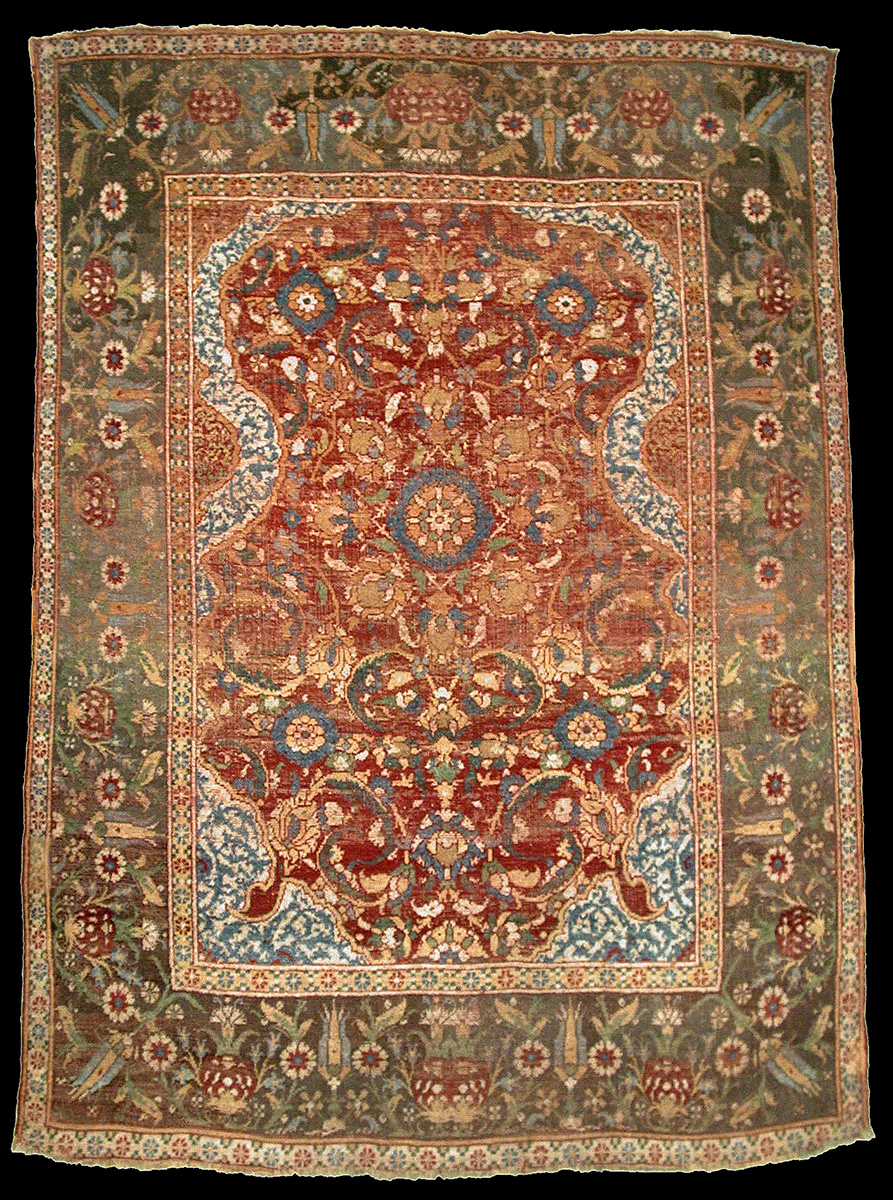|
Fletcher Ottoman
Cairene prayer rug, Egypt, 17th
century. The
Metropolitan Museum of Art, New York
Date: 17th century
Geography: Egypt, Cairo
Culture: Islamic
Medium: Wool (warp, weft and pile); asymmetrically knotted pile
Dimensions: 65 in. high 35.50 in. wide (165.1 cm high 90.2 cm
wide)
Credit Line: Mr. and Mrs. Isaac D. Fletcher Collection,
Bequest of Isaac D. Fletcher, 1917 Accession Number: 17.120.137
Description
The scalloped horseshoe arch and overall floral
field are characteristic of a small group of Ottoman rugs. Some, with
all-wool construction, are thought to come from Cairo, a
well-established rug-weaving center when it was conquered by the
Ottomans in 1517. While continuing the use of the Senneh or Persian
knot and limited palette of colors of the geometric patterned carpets
made under Mamluk rule, the Cairo weavers employed totally Ottoman
elements in their designs. In the center of the field is a
configuration of a rosette type blossom surrounded by palmettes, a
device which appears on many non-prayer rugs of the period and may
have been adapted from them. The border is unusual for this type of
rug and contains the Ottoman favored flowers–tulips, hyacinths, and
carnations. The double flowers appearing at the top and bottom center
of the border may be the result of a not well-planned design. The
guard stripe pattern is a popular one appearing on many rugs of this
group.
Provenance
Mr. and Mrs. Isaac D. Fletcher, New York
(until his d.1917; bequeathed to MMA)

|
